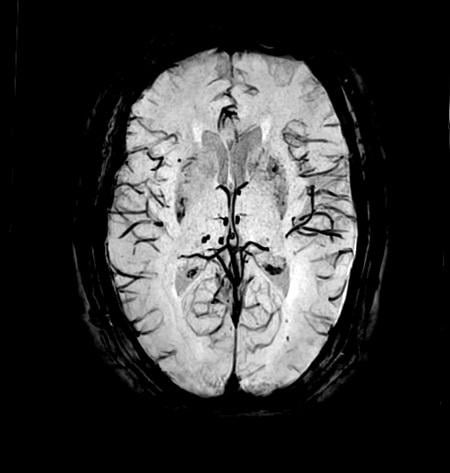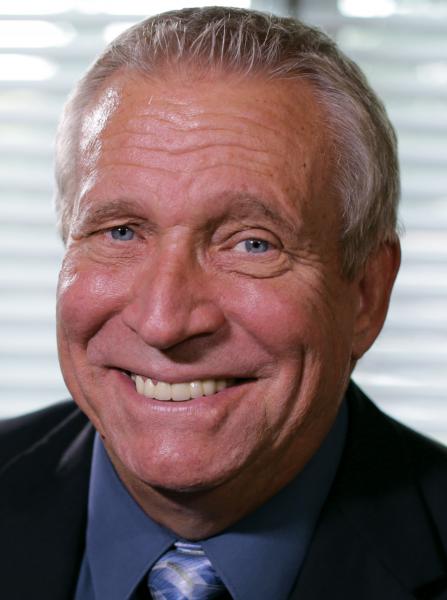
Greg Freiherr has reported on developments in radiology since 1983. He runs the consulting service, The Freiherr Group.
BLOG: Why Advanced Imaging Is Critical in Rural Health

Brain image taken on an Echelon Oval 1.5T MR scanner. Image courtesy of Hitachi Healthcare Americas
People who live in rural America may deserve the same quality healthcare as anyone living in the U.S., but it is not always immediately available.
At least a third of U.S. emergency departments may not have access to magnetic resonance imaging (MRI), according to the American College of Radiology. Emergencies at West Feliciana Parish Hospital, however, do. This rural health center with 12 inpatient beds and an emergency room also has access to a 128-slice computed tomography (CT) scanner.
Combined the two scanners “provide imaging services that other rural hospitals aren’t typically able to do,” said Dakisha B. Robertson, the hospital’s imaging department manager. Among them is cardiac scanning, which is possible on both the Echelon Oval 1.5T MR system and the Scenaria CT. Cardiac scanning with these two modalities represents a growth area that the hospital is currently trying to capitalize on, Robertson said.
For the most part, the imaging department fills available slots with routine cases, averaging as many as seven patients daily on its MRI and up to 10 per day on its CT. Patient volume in each modality has increased, she said, since the two scanners began operating in 2017. (Prior to their acquisition, the hospital offered MRI one day per week as part of a mobile service; the Scenaria CT replaced an obsolete scanner, installed years earlier.)
Balancing Routine and Advanced Imaging
Versatility is critically important, said John Waddell, the company’s senior vice president of sales and marketing at Hitachi Healthcare Americas, which makes the Echelon Oval and Scenaria. Systems operating at rural facilities must be able to handle everyday cases, as well as complex ones, he noted. That’s why Hitachi struck a licensing deal with Agfa for its DR 800, a combined digital radiography and fluoroscopy system.
“Having a universal room that can do DR and fluoro with a high degree of uptime and a reduced footprint can be a real advantage for facilities such as rural community hospitals,” Waddell said.
Similarly, offering modalities such as MRI and CT makes sense for these facilities, Robertson said: “A lot of people like to stay within their community so we try to add the specialties and services to accommodate them so they won’t have to go far.”
OGH Imaging is located in Grand Coteau, Louisiana, population around 1000. The outpatient imaging center is 10 miles north of Lafayette in the rural area of St. Landry Parish. Despite its location, the center aspires to be a top-level provider of imaging.
“We are off the beaten path, but we really pride ourselves on having the latest technology and capabilities,” said center director David Rushing, who noted that OGH Imaging offers MRI on 1.5T scanners, one of which is a wide-bore Echelon Oval scanner. The center also offers CT, mammography, digital radiography and fluoroscopy and sonography. “We can compete with anyone in the urban areas,” he said.
With a wide bore measuring 75 cm in diameter, the center’s compact Supria CT produces high-quality images at radiation doses below those recommended by the American College of Radiology (ACR), according to Rushing. The scanner installed four years ago at OGH Imaging generates 16 slices per subsecond rotation. Data are processed using a 3-D reconstruction algorithm that produces high image quality images with minimal artifact.
Scarcities In Rural America
Advanced imaging capabilities, such as those at West Feliciana Parish Hospital, are scarce in rural America. In an article published September 2014 in the ACR journal, CT was found to be present in just slightly more than half (56%) of all critical access hospitals (CAHs) in each of the nation’s states.
The ACR estimates that about 60 million of the 320 million people living in the U.S. receive health care at critical access hospitals. Many are elderly, as is the majority who use Republic County Hospital. Most of these patients are drawn from the small town of Belleville, Kansas, and surrounding counties. Total residency is about 5,000, according to David-Paul Cavazos, CEO of Republic County Hospital, which is formally recognized as a CAH.
The voluntary CAH status, which confers reimbursement advantages, is difficult to achieve. It requires that hospitals have no more than 25 acute care inpatient beds; offers emergency service all day and all year long; and can provide patient stays equal to or less than 96 hours. Typically these hospitals are 35 miles or more away from other hospitals; almost all are in rural communities.
“We are a rural hospital but I would not consider us remote or frontier,” Cavazos said, refuting the myth that rural hospitals necessarily operate in the middle of nowhere. Republic County Hospital is one of a few hospitals in the surrounding area to offer advanced imaging capabilities. It operates a high-end ultrasound scanner, digital radiography, mammography, nuclear medicine, CT and MRI. (Cavazos noted, however, that MRI is available through a mobile service provider, although the hospital is now looking into installing an MRI scanner on-site.)
“We have to be everything to everybody out here,” he said.
It’s tough to do that. According to the 2014 study published in the ACR journal, in no states in the nation did all CAHs provide CTs with at least 64 slices per rotation, MRI, and nuclear medicine services provided through single photon emission CT (SPECT) and PET/CT. The authors concluded that an overall scarcity of access to imaging services exists at CAHs throughout the U.S. Hitachi, whose marketing focuses on rural providers, is trying to do something about this.
“Hitachi views rural health care as the bread-and-butter of America,” said Jason Miller, the company’s executive director of radiology products. He noted that healthcare facilities are often the largest employers in their rural areas. In keeping with that prominence, “they want to offer the advanced technologies that a large center does, so they don’t have to send patients long distances to get a high level of care.”
It is vital, therefore, that units installed at these rural medical centers be reliable, Miller said, because “These facilities are counting on them.” That means on-site staff training and service must keep equipment “running at peak performance at all times.”
Reliability and uptime were key considerations when Louisiana-based OGH Imaging purchased its Hitachi-made MRI and CT scanners, according to Rushing. Staff availability is critically important to their prime operation, he said. About a half dozen technologists at OGH Imaging are cross trained on both the Echelon Oval MRI and Supria CT.
Because technologists need to be skilled in the use of the equipment, Hitachi offers unlimited on-site training, according to Hitachi SVP Waddell.
In regard to service, Hitachi leverages remote diagnostics to stay on top of installed units. This allows many problems to be predicted and resolved “before they happen,” Miller said.
Ones that can’t be fixed remotely are solved in person by engineers who understand the problem and bring with them any parts needed to do the repairs — all thanks to remote diagnostics, he said.
U.S. residents deserve high-quality health care, no matter where they live, said West Feliciana’s Robertson, a sentiment echoed by other rural providers and Hitachi executives alike.
Greg Freiherr is a contributing editor to Imaging Technology News. Over the past three decades, he has served as business and technology editor for publications in medical imaging, as well as consulted for vendors, professional organizations, academia, and financial institutions.
Editor’s Note: This blog is the last in a four-part series on Rural Healthcare in America. The first blog, Rural Imaging Requires Affordable And Versatile Equipment, can be found here. The second blog, Clinical Demands in Rural America Call for Advanced Imaging, can be found here. The third blog, How Clinical Versatility Helps Small Town and Rural Patients, can be found here.
Related content:
Rural Imaging Requires Affordable And Versatile Equipment
Clinical Demands in Rural America Call for Advanced Imaging
How Clinical Versatility Helps Small Town and Rural Patients



 December 10, 2025
December 10, 2025 









